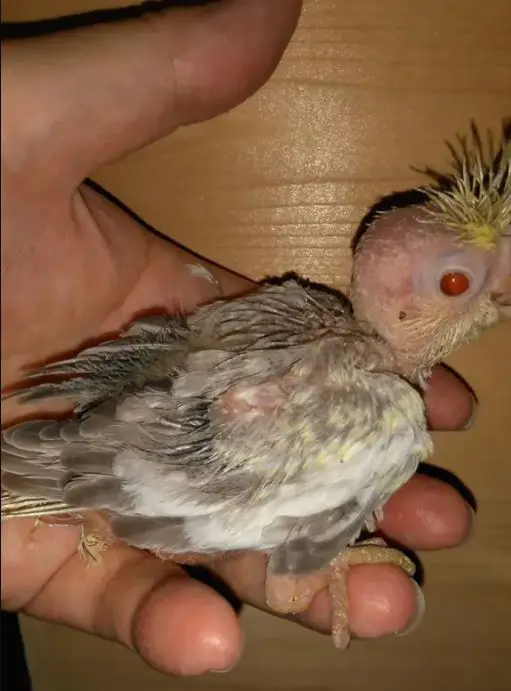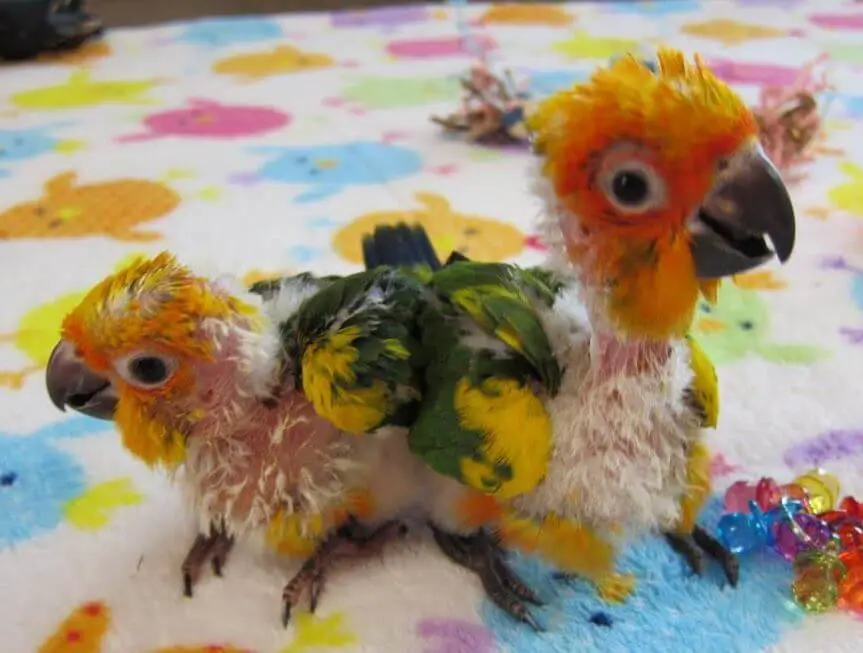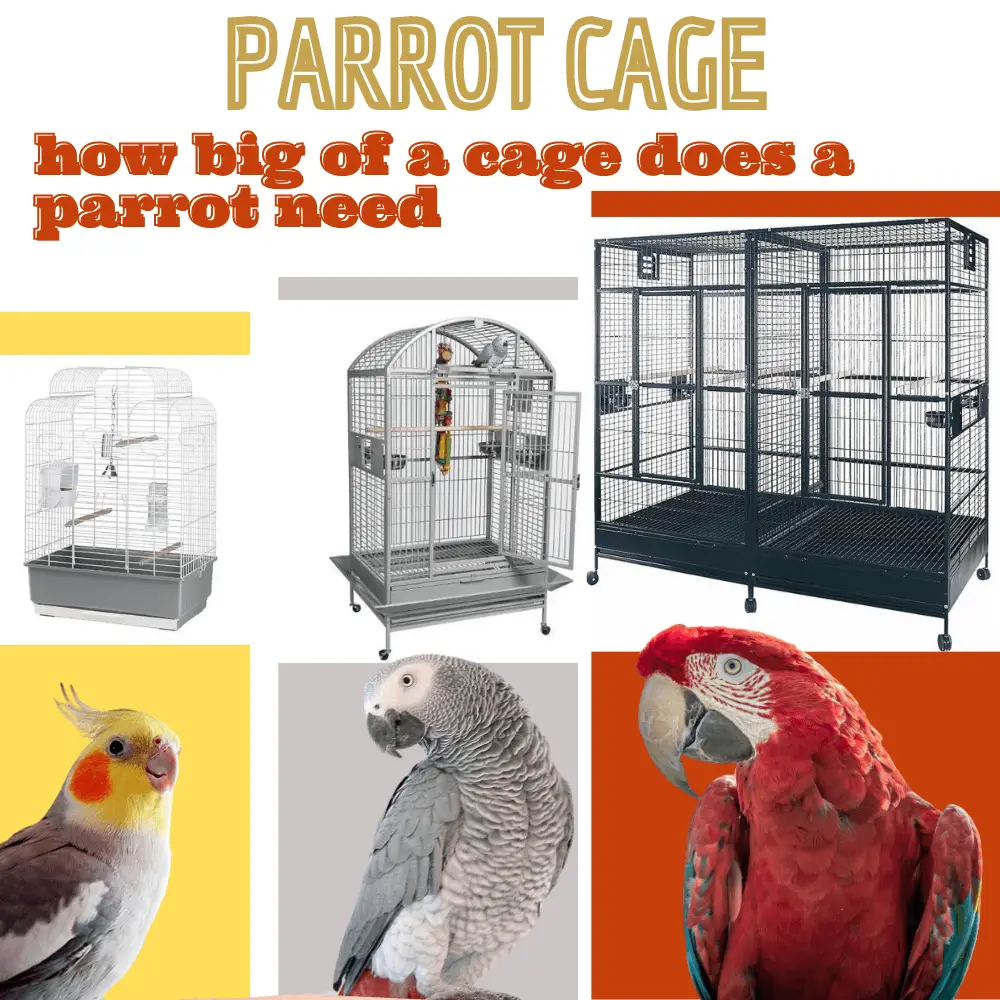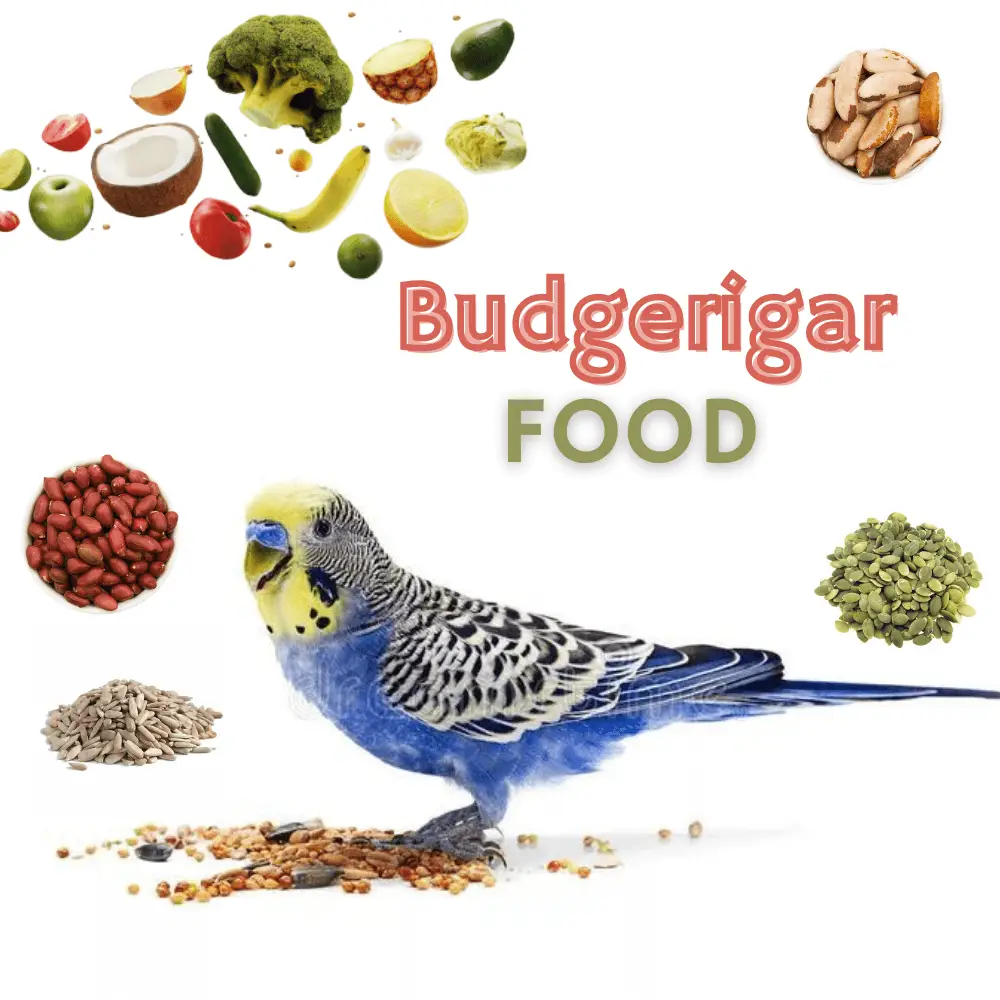Baby parakeet: What do you need to know about buying a baby parakeet? Baby parakeets are simple birds that don’t need a lot of things. They cost between $20 and $60. Owners must teach them tricks and play with them to create a bond and a relationship. Do NOT use harsh chemicals in their presence. As for food, they can eat a variety of seeds, fruits, and vegetables.
Baby parakeets (or budgies) usually cost between $20 and $60. This is the price range you should expect to find everywhere you look. Baby budgies that cost more than $60 are probably overpriced. You should also be wary of birds that are too cheap, as this could mean that the bird is not healthy.
All things considered, the price to pay for these little birds is not that high. These birds usually live for 12 to 15 years if you keep them healthy.
How to take care of a baby parakeet

Parakeets or “Budgerigars” are very good pet parrots. The specific, small variety that people are buying is from Australia.
To be completely honest, parakeets are simple animals. They don’t need much, just that you don’t hurt them. Feed them and make sure they don’t get sick. Check for discharge around their eyes and nose. This can tell you a lot about their health.
At first, baby parakeets are not completely accustomed to their surroundings. They can be a little confused or clumsy, but things sort themselves out.
As for food, give him seeds or pellets with a mix of vegetables and fruits. They may prefer one over the other. I suggest you ask the store or breeder what the bird’s diet was when they had it. Feed him what they gave him so his diet is consistent at first. If you want to make changes, do it gradually so as not to make your little bird sick.
If you’re looking for advice from a community of budgie owners, this Reddit thread has some great information on how to care for a baby budgie.
Who should I buy a baby budgie from?

You can buy a bird at a pet store. Most major pet stores always have a selection of birds, and they’re pretty sure to have parakeets. However, they do not always offer babies. If you really want a baby budgie, you can buy one from a local breeder.
How do you know if the breeder is good?
- They take care of their birds. They won’t let you have the bird until it’s been properly weaned from its parents.
- The old birdhouse is clean and in good condition. You can tell if the bird has been well cared for by looking at the state of its living conditions.
- The seller answers your questions honestly and doesn’t back down from difficult questions that come up.
- They can provide a written guarantee of the bird’s health. You can either ask for it or he gives it to you. This document should allow you to return the bird if you discover pre-existing health issues in the bird.
Find an avian veterinarian
Parrots are different from most animals, so they will need a veterinarian who has specialized in their care. Vets are very helpful and good, but most don’t know much about birds. Make sure the vet you choose has the experience to help you.
This level of the specification may end up costing you a bit more. It depends on the veterinarian and the level of medical care your parakeet needs. I recommend it though if your bird is really in trouble and you don’t know what to do.
Parakeet cage

You will need a cage for the little parrot. I suggest the minimum size be no less than 14″ long by 11″ wide and 12″ high. This may seem odd to you because the bird is tiny. However, your bird will be much happier with something that has a much larger space than it does.
This is especially true for young birds. They want space to explore, roam and play.
Another thing to check is that the spacing between the cage bis is less than half an inch. Thus, your little bird does not risk getting his head stuck. The crate should be a comfortable space for him, not a dangerous or scary space.
Look for cages made of heavy metal wire. They are much less likely to bend or break. It is best to choose a cage with a non-toxic coating. Rust is thus less likely to occur.
I suggest you buy more cups for your bird than the two that come with the cage. The two that come with the cage are for food and water. You’ll usually want another one for fresh fruit and the occasional treat.
The cages are supplied with pegs for the bird to perch on. Perching is actually very important for birds, as it provides them with exercise and contributes to the health of their legs. You will want to purchase other perches with natural curves and angles.
Placing the perches at different levels allows you to vary the life of your bird. The more variety you have, the more entertained and satisfied your bird will be. That being said, don’t overload the cage with tons and tons of perches. Your little friend will always need an open space where he can roam!
Parakeet food

There are many different food options and mixes for your parakeet. To start, I suggest you feed her what she used to eat in her previous home.
This is another reason why I suggest giving your parakeet to a breeder. You can get more specific and personalized answers from them than you might get in a store.
Some birds eat mainly seeds, others pellets. Ask the person who sold you the bird what they give it for food. She may even be feeding the baby parakeet fruits and vegetables.
When people think of feeding small birds, they think of bird seed. It’s good for the pet’s diet because it contains vitamins and minerals, but it’s not the only thing they need. Just like humans, birds need a variety of nutrients, and they must get them from different types of food.
Many types of birdseed are also high in fat. It’s good for part of their diet, but they need more than that. You need to add fruits and vegetables to balance it all out.
Parakeet Fruits and vegetables

Choosing a diet for your parakeet is important for a happy bird! The Beauty of Birds suggests using baby food with fruits and vegetables in addition to normal fruits and vegetables. With actual fruits and vegetables, make sure they’re not too big for the bird’s throat. You don’t want to eat to be too difficult or dangerous.
Another option is to buy dried fruits. You can even dehydrate these foods yourself if you feel like it. Make sure food is naturally dried. Mixed dried fruit is also a great option for your parakeet. They are full of nutrients and they will find them tasty! Just be sure to cut out chocolate and chemically treated nuts.
If you give your bird dried fruit, make sure it does not contain sulfur dioxide. This will increase your bird’s aggressiveness and make it more hyperactive.
A fun idea is to reheat the food you give them. Don’t heat it up, just enough to make a difference. It reminds them that they were fed by their parents because the food was hot.
I really like to give grapes and blackberries to my birds. I find the berries are easy to feed and just the right size to handle them without me having to do anything.
Proteins
In the wild, birds get their protein from insects, but since these are domesticated birds, things need to be changed a bit. It is not necessary to give them a large amount of protein. Give them only a small amount of fresh protein every two weeks. They can snack on peanuts and other nuts for some protein.
The type of fresh protein I’m talking about is tuna, hard-boiled eggs, or well-done chicken. If you are making something for yourself using one of these products, you can just give them a small bite to eat.
A note of caution
There are many things you can feed your parakeet, but there are some foods that are dangerous or even deadly to a parakeet.
Under no circumstances give your bird the fruit pits. The stones I am talking about are cherries and peaches. They contain chemicals that are toxic to parakeets. Apple seeds are also dangerous for birds, and avocados can end up poisoning your bird.
To be on the safe side, always research the food you feed your bird. Even though it is harmless to us, it can be dangerous for them.
What is the temperament of baby parakeets?

Parakeets are one of the most cheerful animals to take care of. They really aren’t bothered by much. Many people like them because of their sweet character and even personality. Personally, I find it easy to deal with. Just feed them, play a few games with them, and clean up after them. They are not very annoying.
Since they are such small birds, they don’t ask for much. They don’t really need a lot of room to move around. They don’t even fly much, to begin with. As long as you have a cage that is the right size for their needs, you should be fine.
They are social creatures and they get along well with other parakeets. If you are patient, you can form a strong bond with your bird. He can become very loyal and will probably enjoy spending time perched on your finger or shoulder.
As with any pet, it is preferable that an adult supervise the animal in the presence of children. Due to their small size, parakeets, both babies and adults can easily fall prey to children who have no tact with animals. Parakeets are not very good at defending themselves, but they can peck or bite when threatened.
Do baby parakeets have a relationship?
Budgies form relationships and it is best to do so from a young age. They are flock birds, which simply means that they will attach themselves to the one or ones they see most often. If you want the bird to be more interactive with you, don’t buy other birds or keep them in separate cages.
You want to be your bird’s “flock”. So decide in advance how much interactivity you want to have with your bird. Teaching your parakeet tricks will also strengthen your bond. The more time you spend with your bird, the more comfortable it will be with you.
Can a baby parakeet be taught tricks?

Yes, you can teach parakeet tricks. The main thing that comes to mind is to teach him to talk. Once your bird is comfortable with you, you should be able to start teaching him some simple tricks.
- Advance
One of the first things to teach your parakeet is to ride in your hand. It’s not really a trick, but more of a way to develop a personal relationship with your bird.
You teach your bird to do this by putting your finger up to the tip of the cage, like a perch. By talking to your bird and waiting calmly, he will understand what to do because your finger acts as a perch.
If your bird does not accept your finger, try daily to put your finger close to the cage, ready to pick up the bird, until it does not startle or move away in reaction.
When he no longer reacts defensively, put your finger in the cage and see what he does. He will feel more comfortable with this closeness and will begin to react.
You can even teach him to ride on your finger by saying “Ride!” or any other phrase that suits you. Try to keep the volume and pitch of your voice consistent when saying these command words. Your bird will begin to make the connection between the phrase and the trick.
- Stick Trick
Many tricks simply involve an action to get a treat. This is a classic Pavlov situation. The turn of the stick is no exception to the rule. You can use any object that can be used as a stick. A twig or dowel works great. Place the stick in front of the parakeet and let her examine it for a minute until she realizes it’s not a threat.
Once the bird has become this stick’s best friend, teach it to nibble on it by giving it a command. Make it turn specific. Once he does, give him a treat. This reinforces the behavior (I told you it was classic Pavlov) and the bird will quickly learn this trick in no time.
- soccer trick
Parakeets are smart. If you roll a ball in front of them, they will try to stop it with their head. So why not turn it into a little football game? You can make your own net or find a miniature one somewhere. Place it behind the bird, then throw a small light ball towards it and watch it stop the ball.
If she blocks the ball, interact with her and say, “Good blocking!” or something like that. You can even reverse things and teach the parakeet to roll the ball into the goal, allowing you to emphatically shout “GOAL!!!” “.
- Talk
Teaching your parakeet to talk seems difficult. It’s a question of patience. Are you ready to know the best way to teach them to talk? Well, just talk to them. They listen and are smart enough to understand what you are saying. Most birds respond to a request or question.
Talking with them is the most consistent and effective way to teach them. Start with simple words like “hello” and “goodbye.” Teach him other things like “thank you” when you feed him. Eventually, move on to other things like people and requests.
This is arguably the most amazing “trick” a parakeet can perform. The parakeet is one of the most intelligent birds there is. Take advantage and teach them some tricks!
Parakeet colors
Budgies come in many different colors. There are many colors due to gene mutation. The main color is a yellow/green look. All others are color mutations. The most common color mutation is blue/white which is actually a budgie that has lost its yellow pigment. These are the two main types of colors.
People cross mutations to get new colors and styles, which makes buying them fun. There’s a whole science behind color and gene mutation that I urge you to check out. It is very interesting and it can help you to find the bird’s color you are looking for.
Are budgie bites painful?
A parakeet bite does not hurt at all. Their beak is actually not strong enough to break the skin. It’s kind of a shock when you don’t expect it. If they feel threatened, they bite.
Do budgies die easily?
Your budgie probably won’t die unless you neglect it. Just feed her and give her plenty of water so she doesn’t get hungry or dehydrated. Also, don’t use harsh chemicals near it, like hair spray or most cleaning products.
Why do parakeets cry?
Budgies squeal when they are bored, sick, or injured. Sometimes they are just excited. It’s random and weird, but you’ll probably get used to it. Sometimes when you are away for a while they will scream for your attention.

